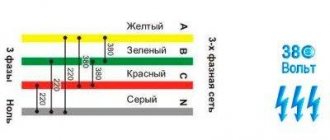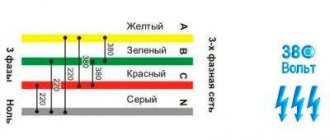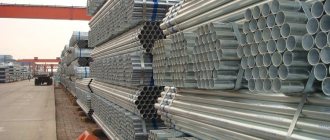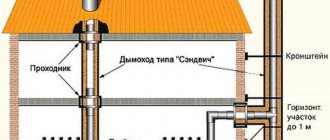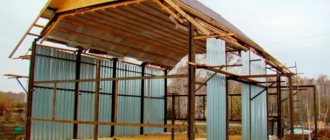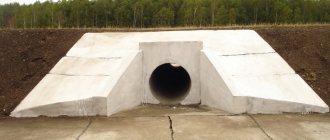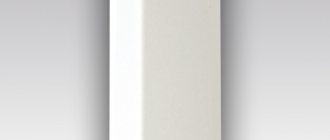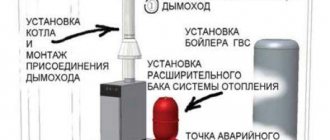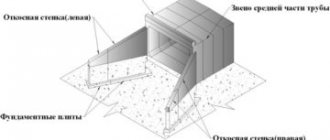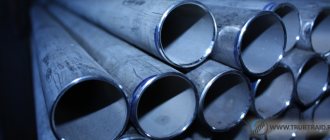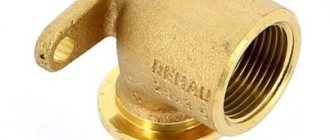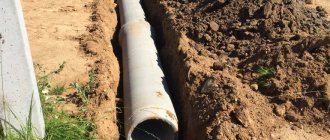We recommend that you read
- Chimney repair
- Stainless steel chimneys
- Boiler chimney
- Steel chimneys
- Chimney height
- Chimney sandwich
- Metal chimneys
- Chimney cable stays
- Chimney masts
- How to calculate a chimney
- Typical designs and drawings of chimneys
- Industrial chimneys
- Chimney calculation
- Design of industrial chimneys
Chimneys for boiler houses are structures with a vertical arrangement, which are designed and erected to remove products generated from fuel combustion into the atmosphere.
Installation features
- Installation of the boiler room pipe begins from the bottom (foundation);
- For a gas boiler house, from an economic point of view, the use of steel pipes is most profitable. But it is worth remembering that the maximum height of a metal pipe is 30m;
- Tall structures are excellent conductors of electricity. Lightning protection is carried out in accordance with the requirements of RD-34.21.122-87;
- The design of a lightning rod is determined based on the design features of the smoke exhaust system. For a non-metallic chimney, the length of the lightning rod is usually 1 m. For every 50 m of the structure, 1 lightning rod is installed;
- Metal chimneys do not require special protection - they themselves act as a current collector;
- All insulating elements must be grounded.
Flue boiler pipes - what tasks do they perform?
Any modern boiler installation must comply with environmental standards, since when burning one or another type of fuel, far from harmless combustion products are released into the external environment. Boiler houses these days operate on solid, liquid and gaseous fuels, which creates a wide range of harmful wastes, ranging from nitrogen oxides to carbon dioxide.
To effectively disperse these and other toxic compounds into the surrounding air, chimneys for boiler rooms are used, which, in addition, are responsible for creating high-quality draft, which is extremely important for the stable operation of units in boiler rooms.
Expert advice
- In addition to cleaning, the chimney must be periodically checked and repaired. Minor breakdowns cannot be ignored - they will lead to major ones. And then the heating process may stop.
- Painting pipes will help improve their resistance to external negative influences.
- Cleaning should not be carried out in severe subzero temperatures (with the exception of permanently cold climate zones).
- Immediately after installation of the boiler room, heating equipment should be tested to determine the chemical composition of the gases.
Production of chimney and ventilation pipes
Series D1
Article: 155
D1 series chimneys are designed to remove combustion products from boilers operating…
Height, m 7-15
- Diameter, mm 150-600
- Number of trunks, pcs 1-3
- Flue material Stainless steel steel
Series D2
Article: 156
Smoke pipes of the D2 series are designed to remove combustion products from boilers operating…
- Height, m 7-60
Series D3
Article: 157
D3 series chimneys are designed to remove combustion products from boilers operating…
- Height, m 15-35
Series D4
Article: 158
D4 series chimneys are designed to remove combustion products from boilers operating…
- Height, m 15-40
Series D5
Article: 159
Smoke pipes of the D5 series are designed to remove combustion products from boilers operating…
- Height, m 20-60
Series D6
Article: 160
Smoke pipes of the D6 series are designed to remove combustion products from boilers operating…
- Height, m 40-150
In situations where the inner surface of the pipes does not meet the technical requirements, soot, soot, ash, and smoke “linger” on the walls of the chimney, clog it and do not allow further effective removal of gases from the boiler rooms. This problem can only be avoided with proper design of pipelines and the use of chimneys for boiler houses with a smooth and very even internal surface, on which waste from fuel combustion cannot “catch.”
The key elements of such pipes are:
- base;
- foundation;
- barrel (it is protected from the inside by a lining made of a special refractory material, usually brick).
The height of the smoke structure, in accordance with Russian SNiP, must be 5 or more meters higher than the height of the ridge on the roof of any building located within a radius of 25 meters from the boiler room.
In practice, the length of the chimney is selected taking into account the ash content of the fuel used, its sulfur content and the volume of fuel consumption in one hour. Flue boiler pipes have standardized indicators of the outlet cross-section and height:
- 0.6–8 m (section), 30–70 m (height) for brick products;
- 0.4–1 m and 30–40 m for pipes made of steel sheets from 3 to 15 mm thick.
At large industrial facilities, the diameter of smoke structures can reach 10 meters, and their height often approaches 300 meters. Pipes whose height is less than 30 meters are allowed to be built exclusively in those boiler houses where up to five tons of multi-ash fuel are burned in one day. If fuel with a high sulfur content is used at such facilities, the service life of the pipe will be extremely short (about 5–7 years).
Dimensions
In addition to the type of material, the diameter of the installed pipe is also of great importance. The size of the thermal insulation layer can reach from 4 to 6 cm, the length of a single fragment can be from 500 to 1000 mm. The thickness of the internal fragment in “sandwiches” can be 1-5 mm. The outer diameter ranges from 200 to 430 mm.
But the internal cross-section is often also:
- 110 mm;
- 115 mm;
- 120 mm;
- 125 mm.
For heat sources with a power of up to 3500 W, you can limit yourself to a chimney of 140 mm. If the boiler or furnace produces 3.5-5 kW, a diameter of 0.2 m is recommended. In the range from 5 to 7 kW, a pipe cross-section of 27-30 cm is used.
The accuracy of calculations can be improved by taking into account:
- type of fuel used;
- the rate of its combustion;
- traction speed;
- height of the structure;
- air flow speed.
Plugs and clamps often have a diameter of 80 mm, although there are also products twice as large. All leading manufacturers also offer chimneys with a cross-section of 130 and 180 mm. The relationship between channel size and throughput is not always direct; Moreover, very wide pipes often perform poorly. The reason is the formation of turbulence and obstruction of the flow of air or flue gases. The cross-sectional area of round and rectangular sections cannot differ by more than the amount of error in the calculation.
For 1 kW of power when using gas, there must be a cross-section of at least 5 square meters. cm. For systems using solid fuel, this figure is even higher - it reaches 8 square meters. cm.
Additionally taken into account:
- room area;
- firebox dimensions;
- size of the portal;
- cross-section of the neck that leads the smoke upward.
What designs do chimneys for boiler houses have?
Without exception, all smoke products designed to create draft and remove harmful substances are subject to standard requirements. They must have:
- good thermal insulation characteristics, which prevent the risk of condensation forming on the internal surface of the structure, increase the service life of the pipe, prevent it from cooling quickly, and also guarantee high-quality traction;
- a cross-section that fully corresponds to the maximum calculated amount of exhaust gases (the correct selection of the diameter is checked based on the quality of dispersion of harmful elements in the air and on the basis of an aerodynamic calculation of the gas-air path);
- reliable fastening (for different types of smoke exhaust pipes, different types of fastening should be used);
- the possibility of access to the structure for the purpose of carrying out its maintenance and periodic inspections of the condition of the pipe (this is achieved through the arrangement of platforms, special stairs and inspection hatches);
- high-quality and suitable material for the manufacture of the structure, providing resistance to corrosion and heat resistance of its inner surface, and frost resistance of the outer surface.
Based on the above requirements, a specific type of chimney for boiler houses is selected:
- industrial trusses: they are mounted on a reliable and extremely strong self-supporting truss, which is connected to an anchor basket placed in the foundation;
- columnar: free-standing independent structures with a shell that acts as a load-bearing element (it is made of steel with a high carbon content);
- self-supporting frameless: mounted indoors and installed on the roof of the building;
- facade and near-facade: have vibration-isolating parts through which wind loads are transmitted to the facade, they are installed using brackets on the wall, the near-facade structure also has a lower foundation to transfer the weight load;
- free-standing masts with guy wires: in such cases, the gas ducts are attached to the column with strong clamps.
It is worth adding that multi-barrel pipes are also built for boiler houses, and not just structures with a single barrel.
Constructive decisions
Electric welding should be carried out using electrodes of type E50A GOST 9467-75. The height of the welds should be taken according to the smallest thickness of the elements being welded, except as specified. The length of the welds should be taken along the entire perimeter of the mating parts. The welds specified in the units are taken from the conditions of manual welding.
Anti-corrosion protection of metal structures is carried out by priming with fire-resistant primer “CERT” in two layers. Anti-corrosion protection of structures should be carried out in accordance with the requirements of SNiP 2.03.11-85 “Protection of building structures. Design standards", SNiP 3.04.03-85 "Protection of building structures and structures from corrosion. Rules for production and acceptance of work." Work on anti-corrosion protection must be carried out in compliance with safety requirements in accordance with GOST 12.3-005-75*.
When carrying out work, comply with SNiP 12-03-2001 “Labor safety in construction. Part 1. General requirements”, SNiP 12-04-2002 “Labor safety in construction. Part 2. Construction production", SNiP "Labor safety in construction. Part 3. Construction materials industry and construction industry.”
The chimney must be painted with marking paint. Daytime markings must stand out clearly against the background of the terrain, be visible from all directions and have two marking colors that are sharply different from each other: red (orange) and white.
The metal structures of the tower are fastened to the base through a base plate anchored with anchors assembled into an anchor block. Anchor bolts, combined into blocks, should be installed in the foundation before concreting on special removable conductors, which strictly fix and ensure the design position of the bolts and anchor reinforcement when concreting the foundation. Anchor bolts must be tightened to a force equal to 1.1xP, where P is the design load on the anchor bolt. To prevent unwinding, lock nuts are installed on the anchor bolts. Tighten the anchor bolts after installing the footing, under the base slab, from concrete grade no lower than B25F75W4 on fine aggregate, leaving it for at least 7 days after pouring.
By the start of installation, the above-ground parts must be completed and handed over according to the zero cycle work report.
Thoroughly compact the backfill soil layer by layer to a dry soil density of 1.6 t/m3.
Along the perimeter of the foundation, after installing the chimney, make a blind area with a slope from the structure of at least 0.03.
All work should be carried out in accordance with the requirements of SNiP 3.03.01-87 “Load-bearing and enclosing structures”
Designing chimneys for boiler houses is a complex multi-step process
The design of the structures we describe for boiler houses consists of several stages:
- choosing the type of structure;
- carrying out calculations of the gas path and pipe aerodynamics;
- selection of a pipe height that would ideally meet all SNiP requirements;
- calculation of the diameter of the structure;
- calculation (and subsequent comparison with recommended indicators) of gas velocity in the pipe;
- establishing gravity indicators for a smoke product;
- performing calculations on the stability and strength of the structure;
- preparation of technical specifications for the construction of the foundation;
- determination of the type and method of fastening the structure;
- thermal calculations.
Order fulfillment procedure
- Based on the characteristics of the boiler room received from you, we perform a preliminary calculation of the cost of the pipe.
- We agree on the price and draw up a contract for the work.
- We manufacture chimneys for industrial use according to approved drawings. The materials and technologies we use in production fully meet the requirements of state standards. As a result, we produce reliable products that have been in use for many decades.
- We deliver finished chimneys to the customer. We carry out orders for heat generating enterprises in all regions of Russia.
Call us to get more information, discuss delivery terms and place an order.
Geography of completed projects
Pipes for installation in boiler rooms are now made from hot-rolled sheets (the diameters of the resulting products range from 57-219 mm) and cold-rolled sheets (the diameter of the finished product in this case is 10-76 mm). At the same time, it is also possible to produce chimneys with other cross-sections if their customer puts forward such requirements. They are most often made from steel grades 20 and 10, and stainless steel is often used. Finished products are necessarily subjected to tests for impact strength and non-destructive testing. At the last stages, drawings of the pipe are created, and an accurate estimate of the funds that will need to be spent on its construction is made.
How to choose?
If you plan to do the work yourself, it is advisable to abandon any solutions using bricks. It is relatively practical, but installation is very complicated. The fee for the services of professional stove-makers will also be significant for most people. The use of metal products is justified not only by the ease of installation, but also by their comparative lightness (there will be less load on the floors, walls and foundation).
But galvanized metal transmits more heat than brick, and therefore its normal operation is only possible with insulation. Ceramics combines the practical properties of brick and metal. At the same time, it is more expensive than steel, but cheaper than baked clay. If you have to create a curved chimney, a ceramic structure is unlikely to be suitable. It works well only in vertical areas.
Chimneys located outside the house are still rarely created, so they are perceived as a manifestation of originality and fresh design delights. But at the same time, their use is limited to cases when a heater is installed in the house that does not correspond to the previously drawn up project. The ideal vertical is most easily created when installing an internal chimney. If the traction is not very good, it is best to choose this option. You will have to come to terms with increased labor intensity and the need to carefully work on fire prevention.
It is undesirable to make smoke channels with horizontal sections (in total) of more than 1 m. Deviation from this rule sharply reduces draft. The key points when choosing pipes and when assessing their configuration are fire safety standards and compliance with the characteristics of the heat source. Exterior, design excellence and space occupied in the house itself and outside are secondary. Black steel seems to allow you to save money, but its practical characteristics are noticeably lower than those of stainless steel, especially with regard to strength.
The low level of alloying additives is good because such material is more resistant to corrosion. Chimneys of this level are preferable in dachas, bathhouses and similar places, since their regular use is almost impossible. You can extend the service life if you take structures with the thickest walls possible. The longer the sections, the better, since even perfectly executed seams and joints significantly accelerate the degradation of the chimney. Overlap welding or beading of joints is contrary to process standards.
When selecting pipes, you should carefully check for dents. If a layer of insulation is placed inside, it must be extremely dense so that the thermal properties are not impaired. The insulation material itself is also important; resistance to ignition and stability of the composition when very hot depend on it. Reputable and responsible manufacturers must include connecting couplings in the delivery kits; they also include instructions from the manufacturers and the pipe must be marked.
Ready-made drawings and projects of chimneys
Mast
watch Mast chimneys are designed for removing flue gases from boiler houses operating on liquid,…
Self-supporting
watch The self-supporting chimney is designed to remove combustion products and provide natural draft into the fuel...
Facade and flue ducts
see The façade (wall) chimney consists of separate insulated sectional chimneys and roof elements…
On guy ropes
look Chimneys on guy wires are a single-barrel vertical steel structure, fixed with a steel...
Truss
watch Truss chimneys are a steel lattice tower of SRB and thermally insulated gas suspended on it...
Columned
watch The column chimney is a structure consisting of a metal supporting outer shell and a gas outlet…
Principle of operation
The combustion process in the boiler is impossible without air entering the installation through the pipeline. Combustion products must be removed outside. The movement of air masses occurs during the process of traction. Without a properly designed pipe, safe operation of the boiler is impossible.
The operating principle of the design is based on the convection method. Cold external air masses are heavier, so they fall down the pipeline. The boiler heats them up. As a result, the air becomes lighter. Heated masses rise upward, taking with them gas and combustion products.
The thrust force affects the speed of movement of air and smoke inside the pipe channel. Aerodynamic performance depends on the temperature inside and outside the boiler plant, and atmospheric pressure.
Literature
Shishkov I.A. etc. Constructions...
Information is provided on the designs of furnaces and chimneys, methods of their construction, equipment and construction mechanisms used in construction, building materials, working time costs and principles of organizing industrial construction...
moreRichter L.A., Knyazev A.M. Sun…
This textbook contains sections of the course “Auxiliary installations, equipment and pipelines of thermal power plants” on ash collectors, air protection issues and chimneys of thermal power plants, written by professors...
moreZach R.G. Boiler installations
The book is a textbook on the course “Boiler installations” for students of higher technical educational institutions.
The introduction examines and describes the general diagram of the boiler installation and gives basic definitions. The first part of the book is dedicated to… read moreAbdrakhmanov N.Kh. (ed.) About...
Industrial safety of industrial chimneys and ventilation pipes: a collection of scientific papers based on materials from a consulting and methodological seminar, [city.
Ufa, Republic of Bashkortostan], June 19, 2008 / Ex. on technological and environmental science… read moreZakharov I.V. Gas duct repair...
The book describes the organization and technology of repairing metal, brick and reinforced concrete gas ducts and chimneys of power plants.
The mechanization of repair of gas ducts and chimneys is considered. Information on safety precautions and fire safety... read moreParkani D. Chimney pipes…
The book by the author of the Hungarian Republic examines traditional and modern designs of chimneys for household stoves.
Their structure and operating rules are described. The main attention is paid to the issues of pipe laying and repair. For a wide range of… read moreBuilding Calculation Guide...
Recommended for publication by the section of the dynamics of structures of the scientific and technical council of the TsNIISK named after.
Kucherenko. Guide to the calculation of buildings and structures for the action of wind. - M.: Stroyizdat, 1978. . . . With. /Center, scientific research. inst st... more detailsMethodology for calculating smoke…
The book summarizes the experience of specialized expert organizations and provides the following: - methods for calculating the bearing capacity and service life of industrial buildings and structures to ensure industrial safety expertise;
- I... read moreElshin A.M. - Chimneys...
CHAPTER 1. Classification and main elements of industrial chimneys Classification of pipes by technological purpose and main structural material A classification of pipes by technological purpose and main design is given...
more
Story
The chimney was first described by the Greek Theophrastus in the 4th century. BC e.
In the ancient world, pipes were used inside building walls to vent bakery gases, but true pipes only appeared in Europe in the 12th century. Industrial chimneys appeared at the end of the 18th century.
The appearance of chimneys is inextricably linked with heating structures. The simplest of them is a fire surrounded by stones. In ancient times, such a heating “design” made it possible to warm up by the fire, prepare simple food, but nothing more. People began to ask the question of how to stock up on heat much later, when they began to wander further and further north. For example, in the Ussuri zone, according to the testimony of V.K. Arsenyev, a travel writer who explored those lands, the homes of settlers from Korea were heated by very interesting chimney channels, which were laid in the floor of the house and passed through the residential areas, heating them. The combustion products came out through a hollow tree, which replaced the outer part of the chimney.
And in Rus', heating was previously carried out without the use of chimney pipes at all - the black way. Until the 17th century, even in urban conditions, stoves of all classes were heated in this way. This method of heating a living space was unsafe, since carbon monoxide gases, harmful to humans, could accumulate in the house. And the housing heated by this method did not look quite presentable - the walls and stoves had to be updated all the time. By the way, whitewashing of stoves has been going on for a very long time and initially it was not intended to ensure the aesthetic appeal of the heating structure, but to monitor its working condition - any cracks and crevices clearly appear on the white surface, as soot settles on them.
Services
Estimate documentation
The local estimate for the chimney is drawn up according to the “Methodology for determining the cost of construction products on the territory of the Russian Federation” - MDS 81 - 35.2004, put into effect on 03/09/2004...
more detailsChimney demolition
Before the start of demolition and dismantling of the chimney, a set of preparatory measures is carried out in accordance with paragraph 6.9 of SP 48.13330.2011.
The preparation of the territory and workplaces, warehousing, temporary tran… read moreOOS development
The purpose of developing the environmental protection section is to determine the impact of an existing or newly built boiler house, as well as after technical re-equipment, on environmental pollution, as well as to develop measures for ...
moreChimney installation
We provide quick and high-quality installation of boiler room chimneys of any type and height.
All work is carried out under the control of engineering and technical personnel, the work project and is accompanied by a warranty for a period... moreManufacturing
Chimneys are manufactured and installed according to individual projects, which include measures to ensure safe and durable operation.
We manufacture chimneys of various types: one... more detailsLight barrier
The light barrier is designed to warn aircraft of danger at night or in poor visibility.
Signal lights are installed on pipes on one or several tiers in height depending on the height of the building... moreAerodynamic calculation
Aerodynamic calculation determines the throughput of the structure at a minimum value.
The throughput must have such an indicator that will allow hot gases and other substances to freely pass through the chimney and escape into the atmosphere... moreStrength calculation
Optimal stability and strength are calculated taking into account several factors.
divided into two categories: -external (seismic activity, soil stability, amount and intensity of precipitation, wind rose); -operational (weight of the structure, number… more detailsDevelopment of QOL
KZh - working documentation for the manufacture of monolithic reinforced concrete structures at the construction site.
In the KZH section, all reinforcement components of reinforced concrete structures are studied in detail, dimensional drawings of the formwork, specifications of materials are provided... moreThermal insulation of chimney
Poor quality insulation or its complete absence leads to premature destruction of the gas outlet trunk.
There are several reasons that have a particularly strong impact on the integrity and functionality of the chimney. more detailsKM development
The company's experienced specialists are ready to develop design documentation for the CM stage (metal structures) in the shortest possible time.
We can develop both stage P (project), necessary for passing the examination, and stage P (working). more detailsKMD development
KMD design is carried out on the basis of KM calculations and represents the development of detail drawings of the designed metal structures.
This set of construction documentation is necessary for the manufacture of metal structures, t... more details
The service life of such a chimney
The service life of a chimney depends on the material from which it is made.
- Reinforced concrete pipes, if properly used, will last at least 50 years;
- Brick ones are the most durable. “Live” up to 100 years;
- Metal. Products with the shortest service life. Depending on operating conditions and the presence of internal protection, it is 10-30 years.
- Reinforced concrete and brick pipes are widely used for the removal of both conventional and aggressive gases.
Kunstkamera
Zhukovsky's blow in the chimneys
The boiler reached operating mode, that is, hot gases flowed through the pipe at the calculated flow rate, then the burner suddenly went out - the fan stopped, the gas continued to move by inertia, and accordingly left behind a vacuum zone.
The boiler was started in violation of the operating schedule, without pre-heating... more detailsPoor quality chimneys
Photo 1. Thermal insulation in the form of soft mineral wool mats with a density of 25 kg/m3 instead of 120 kg/m3 according to the project.
Photo 2. Absence of a condensate trap at the bottom of the vertical gas outlet of the boiler. Photo 3. Foreign objects on the diaphragm of the explosive... more detailsSmoke Leaning Tower of Pisa
Comments on the project The shape of the load-bearing lattice tower does not meet the requirements of SP 43.13330.2012 “Structures of industrial enterprises.
Updated version of SNiP 2.09.03-85.” The use of this design solution (rigid struts in the form of a system of volumetric trusses) is… more details30 meters, Du-500, Du-400, ...
1. The adopted design solutions of the “KM” section do not comply with the requirements of SP 43.13330.2012 “Structures of industrial enterprises.
Updated edition of SNiP 2.09.03-85”: – the shape of the load-bearing exhaust lattice tower does not meet the requirements of paragraphs. 9.4.8, 9.4.11; ... more detailsDestruction of load-bearing belts...
The only reason that can cause tensile stresses in the wall located along the generatrix of the cylindrical surface is water.
When water turns into ice, it increases its volume by 9.05%. Ruptures of seamless pipes, as they look in the photo, are typical for damage caused by ... more details
